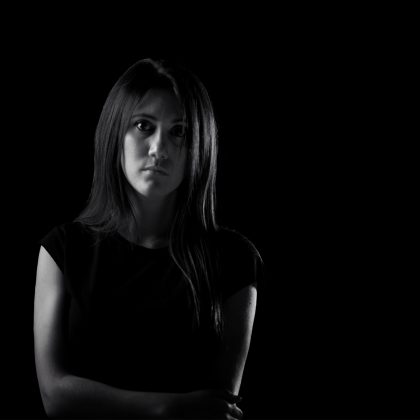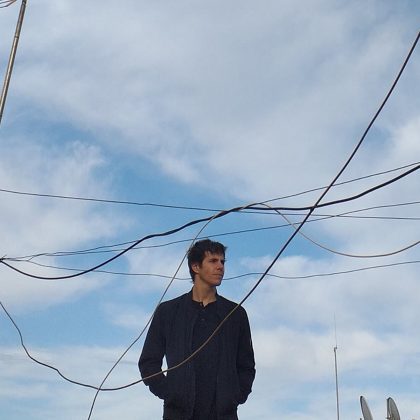LFO “LFO”
The birth of our underground brand Factory 93 not only brought on an adrenaline rush reminiscent of the renegade warehouse era of raving—on which Insomniac was founded—but it also had us thinking back to all the people, places and parties that made this whole operation possible. And with that came a burning desire to crack open our collection and dust off the classic records we couldn’t live without. Through our From the Crates series, we’ll be breaking out both seminal and obscure cuts alike, imparting some knowledge in the process.
By the late ‘80s, the UK had hungrily partaken in the new sounds coming out of Chicago and Detroit—and house, acid and techno were among the predominant styles of British nightlife. Clubs like Shoom and the Hacienda set the scene in motion, the Summer of Love opened the floodgates, and producers were diligently recreating the music that was coming over the Atlantic.
Many of those tracks—M|A|R|R|S’s “Pump Up the Volume,” Krush’s “House Arrest,” and the Style Council’s version of Joe Smooth’s “Promised Land,” just to name a few—went on to worldwide success, and some have entered the canon of classics. But surprisingly, given the UK’s penchant for adopting an existing style, weirding it out a bit and reselling it to the world—witness what happened to rock once the Brits got hold of it—there had yet to be a fully British take on the new sound of clubbing.
As the ‘80s crept toward the ‘90s, that all began to change. The seeds had been planted earlier in the decade, when a wide swath of England’s youth took on the trappings of B-boy culture, along with its attendant sounds of hip-hop and electro. The music took particular hold in the North, where it began to merge with elements of both bass-heavy Jamaican dub and a certain Thatcher-era, post-industrial vibe—not a gloomy malaise, exactly, but a feeling that perhaps the future wasn’t so rosy after all.
“The sound—a sometimes dark, foreboding mix of heavy-duty sub-bass, alternately churning and thudding 808 rhythms, dystopian synth filigree, and science-fiction vibe—was utterly unlike anything that was coming out of the States.”
The result: A new, distinctly British style variously dubbed Yorkshire bass, bleep techno, Sheffield bleep, bleep ’n’ bass or, simply and most succinctly, bleep. The sound—a sometimes dark, foreboding mix of heavy-duty sub-bass, alternately churning and thudding 808 rhythms, dystopian synth filigree, and science-fiction vibe—was utterly unlike anything that was coming out of the States.
As is generally the case in these matters, there’s some debate as to what the first bleep track was, depending on how narrowly one wishes to define the sound. Music scribe Simon Reynolds, writing in Fact magazine, nominates 1989’s “The Theme,” from Bradford crew Unique 3; soon thereafter, Forgemasters’ “Track With No Name,” which also served as the Warp label’s introduction to the world, was unleashed. (Warp, then based in Sheffield, served as a bleep headquarters of sorts.) What’s certain is that by the end of that year, bleep was in full low-end flower, with cuts like “Testone” by Sweet Exorcist and “Dextrous” by George Evelyn, under his Nightmares on Wax alias, finding fans among British DJs, clubbers, and clued-up lovers of left-field dance music the world over.
A few years earlier, a pair of Leeds-area lads, Gez Varley and Mark Bell, had joined forces. “We first really met in 1984 in Leeds as rival breakdancers—we grew up in different parts of the city—so we kind of knew each other back then,” Varley related in a 2014 interview in DJ Mag. “We met up again in 1988 on a photography course in Leeds, quickly became friends, and started to make music together… influenced by groups like 808 State, Unique 3, Nightmares on Wax, Forgemasters, and also stuff like Kraftwerk, Pink Floyd, Detroit techno, acid house and early electro.”
Naming themselves after the common abbreviation for “low-frequency oscillation,” Varley and Bell crafted the eponymous “LFO,” a rumbling number boasting woofer-waffling bass, eerie Kraftwerkian synths, Detroit-inspired hi-hats, and a robotic voice name-checking the track’s title.
“We gave a tape of our recordings to DJ Martin [LFO associate Martin Williams], who helped loads with arranging our tracks so it’d work on the dancefloor,” Bell recalled in an unpublished 2007 interview. “We’d just been messing around with drum machines since we were like 13, tapping away at them like they were arcade games, making tapes to play our mates at school… DJ Martin would play our cassettes in his sets, and people would go mental—in a good way—‘cause they were totally raw.” (Williams, who received a cowriting credit for “LFO,” would become a go-to studio engineer for many bleep acts.)
The demo, simple in construction but effective as hell, found another early admirer in Nightmares on Wax’s Evelyn, who would include it in his DJ sets. Through Evelyn, “LFO” made it to Warp headquarters, which released it in late spring of 1990. The record became one of bleep’s most recognizable tunes, selling 130,000 copies and peaking at #12 in the UK singles chart. It was also featured on LFO’s ‘91 debut album, Frequencies, named by The Observer as one of the “50 albums that changed music.”
Soon after Frequencies’ release, bleep had largely run its course as a musical movement, perhaps stymied by a strict sonic palette that limited creative license within the genre. Bell and Varley carried on, ultimately releasing Advance in 1996; the album was well received, but it didn’t have nearly the same impact as “LFO” or Frequencies. Varley quit the duo that same year, but he continues to produce propulsive, minimal-minded techno under the G-Man moniker to this day.
Bell, among many other endeavors, worked on Björk’s Homogenic and produced Depeche Mode’s Exciter, and he had a busy career as a remixer. He had one last burst of LFO energy in him, and in 2003, he released Sheath. The LP felt like a playful, almost sentimental throwback to LFO’s early days, well worth seeking out for the album’s fun and bleepy “Freak.”
Bell, sadly, passed away in October 2014; at only 43 years of age, he succumbed to post-surgical complications. But his and Varley’s legacy is secure—with “LFO,” they had a hand in one of electronic dance music’s defining moments.





